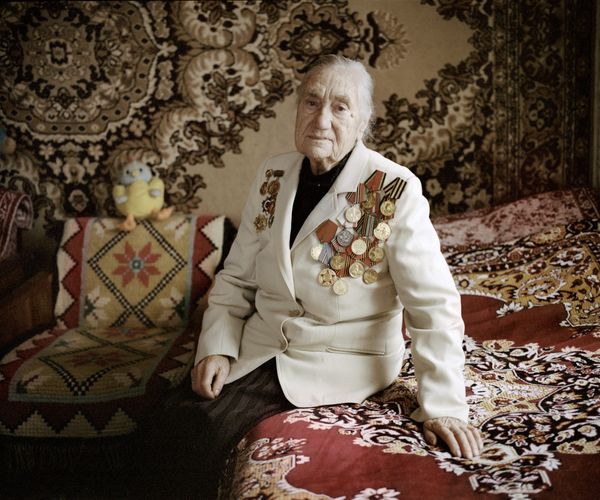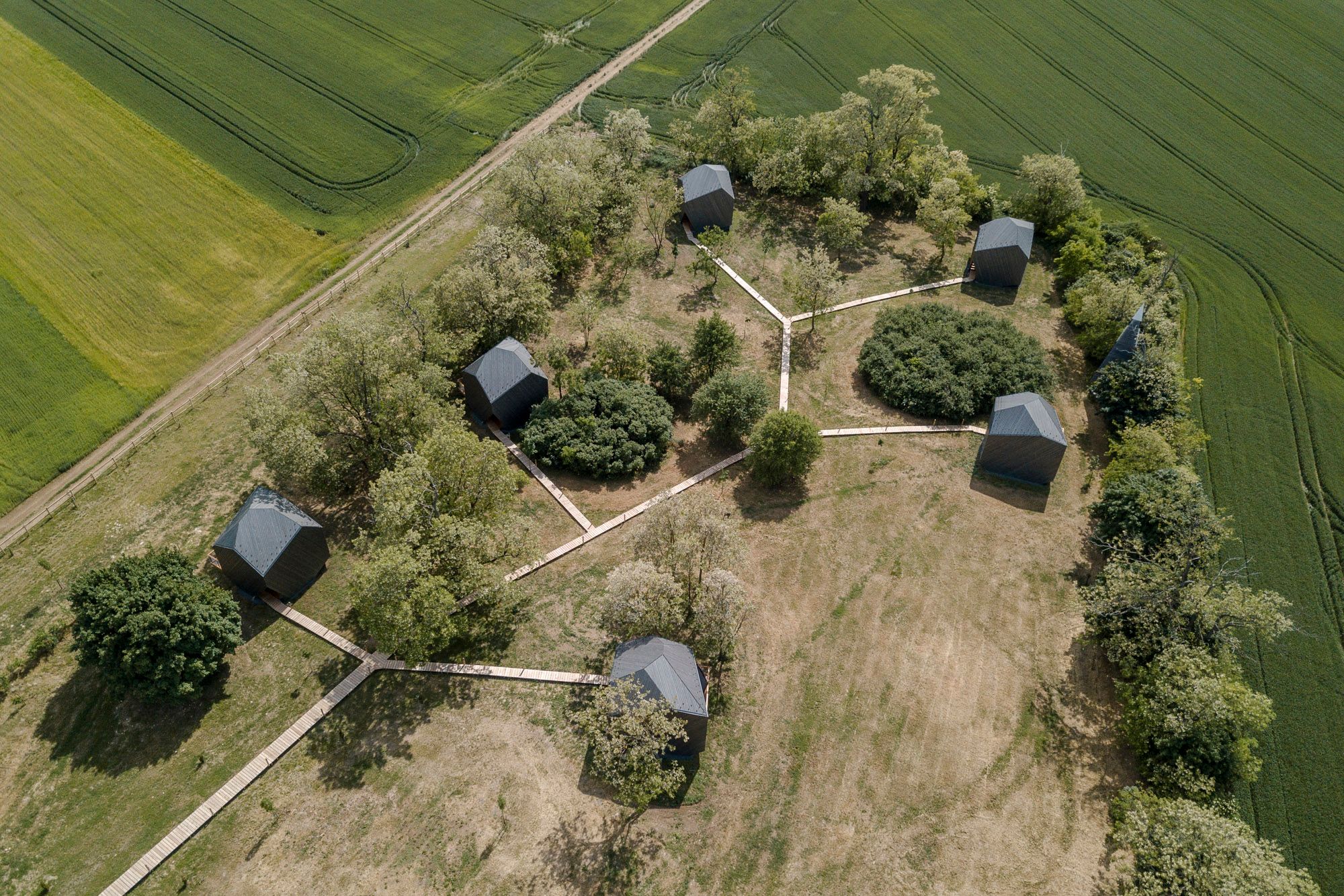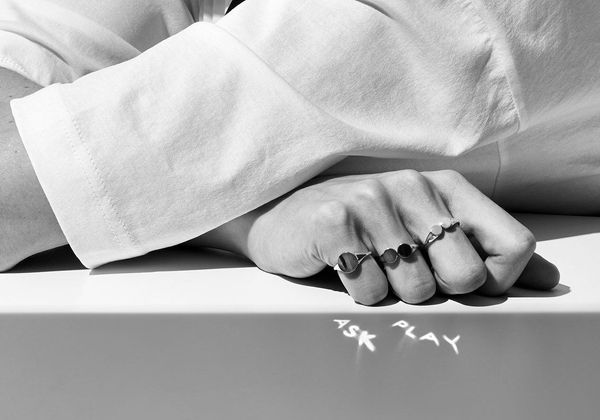Hello Wood an architectural firm has embarked on its latest project in an unusual way, acting as both architect and property developer. They have partnered with TreeHouses, the creators of the highly acclaimed tree houses of Noszvaj, to create a new and unique accommodation: six design cabins and a reception building connected by a boardwalk in a hidden corner of the Balaton Uplands. We spoke to Tamás Fülöp, architect and designer of the Sziklák project (meaning ‘Boulders’—the Transl.) and member of Hello Wood, about the details and architectural concept of the new development. Interview.
Hello Wood started working with cabins a few years ago, thanks to one of their breakthrough successes, the Workstation cabin, which we have featured previously in Hype&Hyper. With a floor area of just eight and a half square meters, this cabin, if placed in a garden, can be used as an extra room, a private study, or even a relaxation room, while offering a well-thought-out, high-quality space. After Workstations, the Sziklák project represents another change of scale for the architectural firm. “The Sziklák cabins are in fact full-fledged houses, yet they look like sculptures,” says Tamás Fülöp, who was also the architect of the Workstation project.
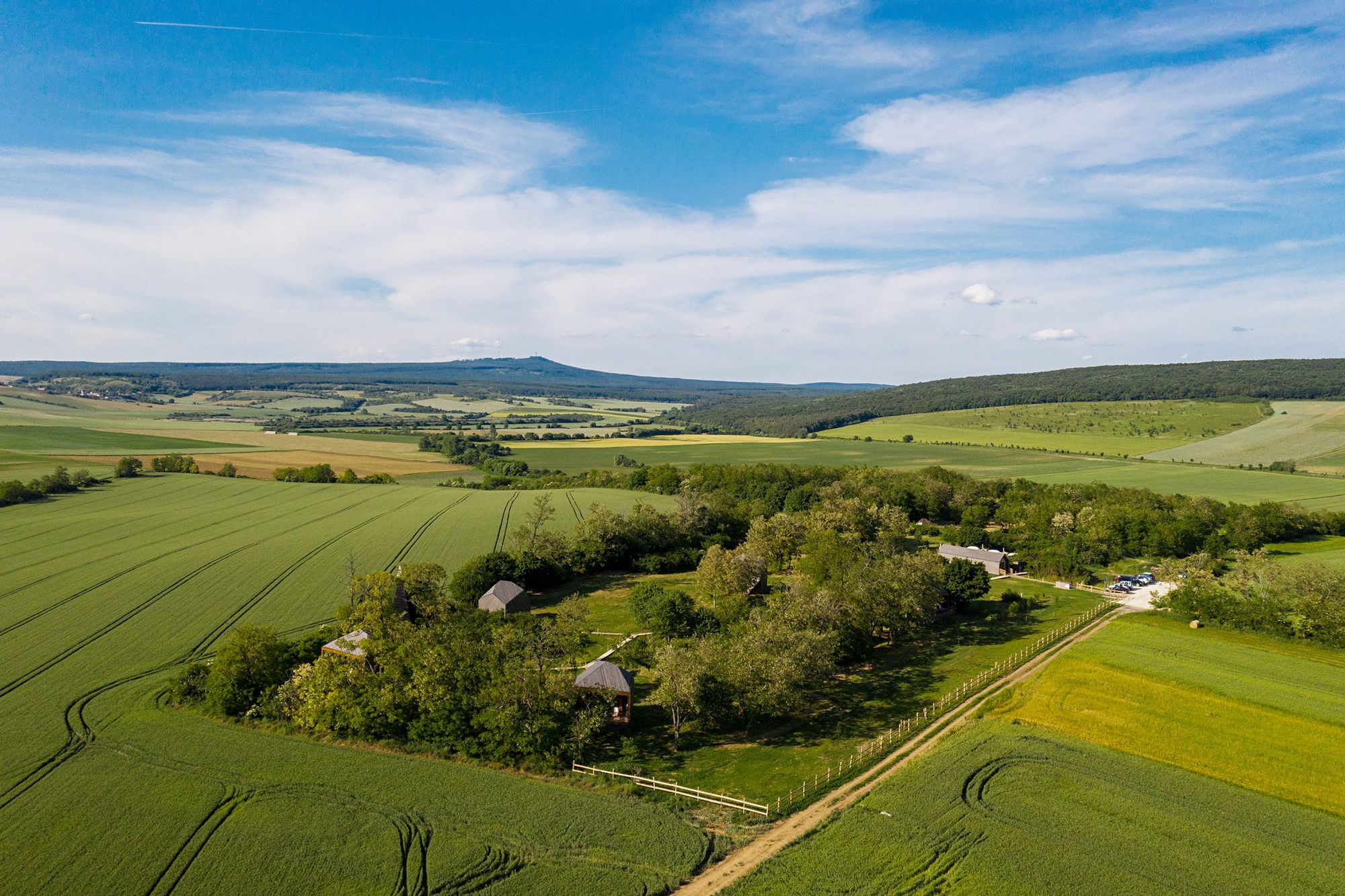
Creating an architectural category
“I think being an architect is a never-ending process of development: a constant search for a path,” Tamás begins. As he points it out, when you ask someone what kind of architectural approach they have, the answer can be quite complex. “That’s why, in order to have a guide, together with the Hello Wood design team, we created the preamble of the architectural firm, in other words, its design methodology. It’s a list of twelve points, with keywords to help in case we get stuck in the design process, as well as to remind us of what we’re really aiming for,” he elaborates. One of these factors is the almost trivial notion of sustainability, which Tamás says is essential but needs to be understood and applied in the right way: in architecture, this includes, for example, the use of wood, a material that Hello Wood favors, and the fact that the architectural firm also creates on a cabin scale. Tamás adds that it is also crucial for an architect to reflect on the era he lives in and the environment he is designing for.
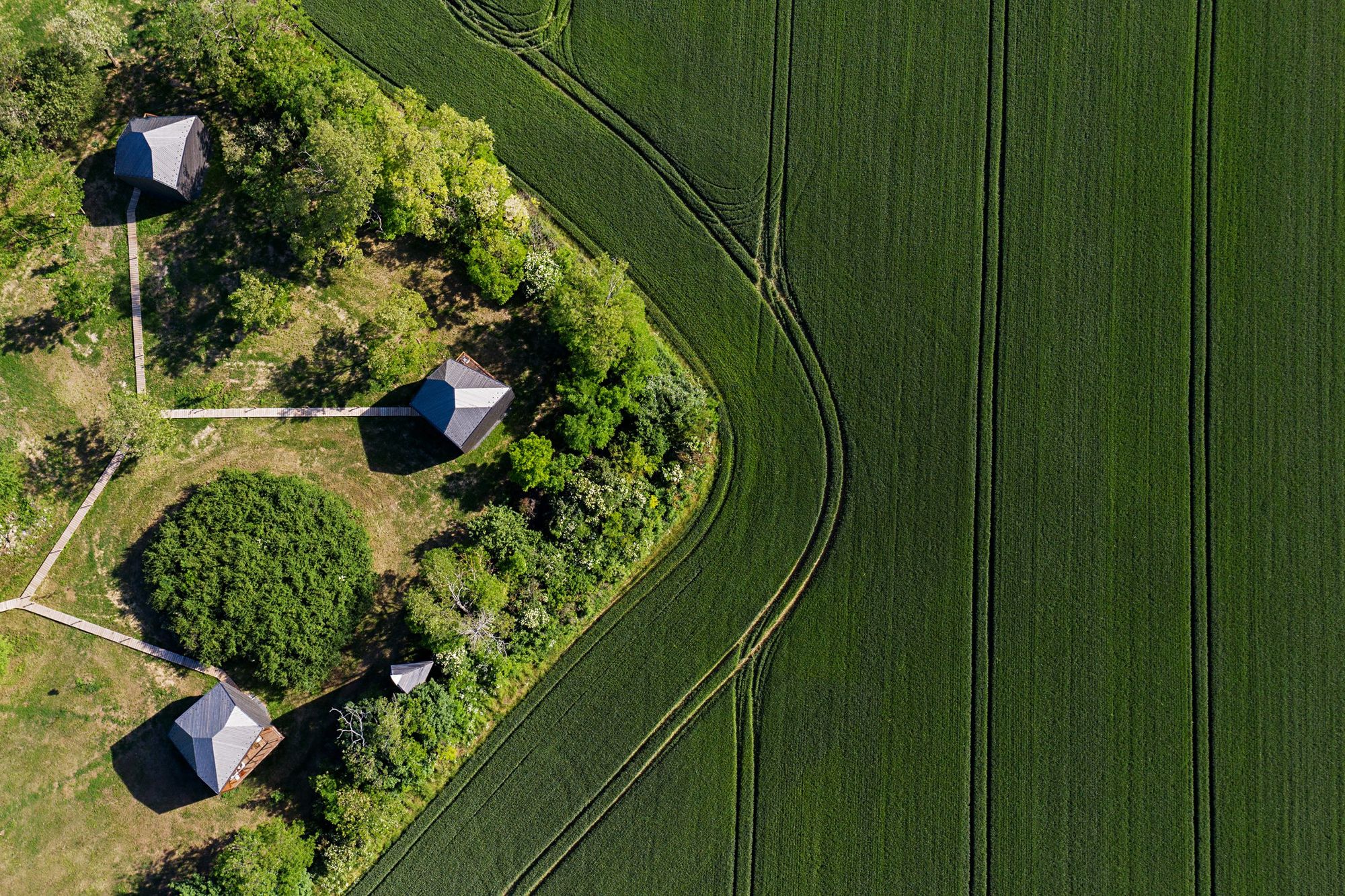
All of these aspects come together in the case of the Sziklák design cabins, along with an additional inspirational factor. As Tamás points it out, what motivates him in his work is the fact that the Hello Wood team “allows for the creation of architectural categories.” It was no different with the Sziklák project: just as you couldn’t sleep in the standing tree houses until the creation of the TreeHouses in Noszvaj, “no one had ever slept in a boulder before”, he notes. Yet the new design cabins are unique not only in their design but also in the location chosen.
Rocks on a plateau
“Csóromfölde is literally in the middle of nowhere, in a good way” Tamás continues. The Sziklák are located in the middle of the Dörögd Basin, near Kapolcs, on the service site of a former farmstead (Csórompuszta). Hello Wood has organized various international thematic creative camps here since 2016, which have resulted in several interesting structures. “When you’re out in Csóromföld, you get an uplifting feeling that is hard to describe, you can almost feel the ancient power of the site: everyone who goes there falls in love with it immediately,” he explains.
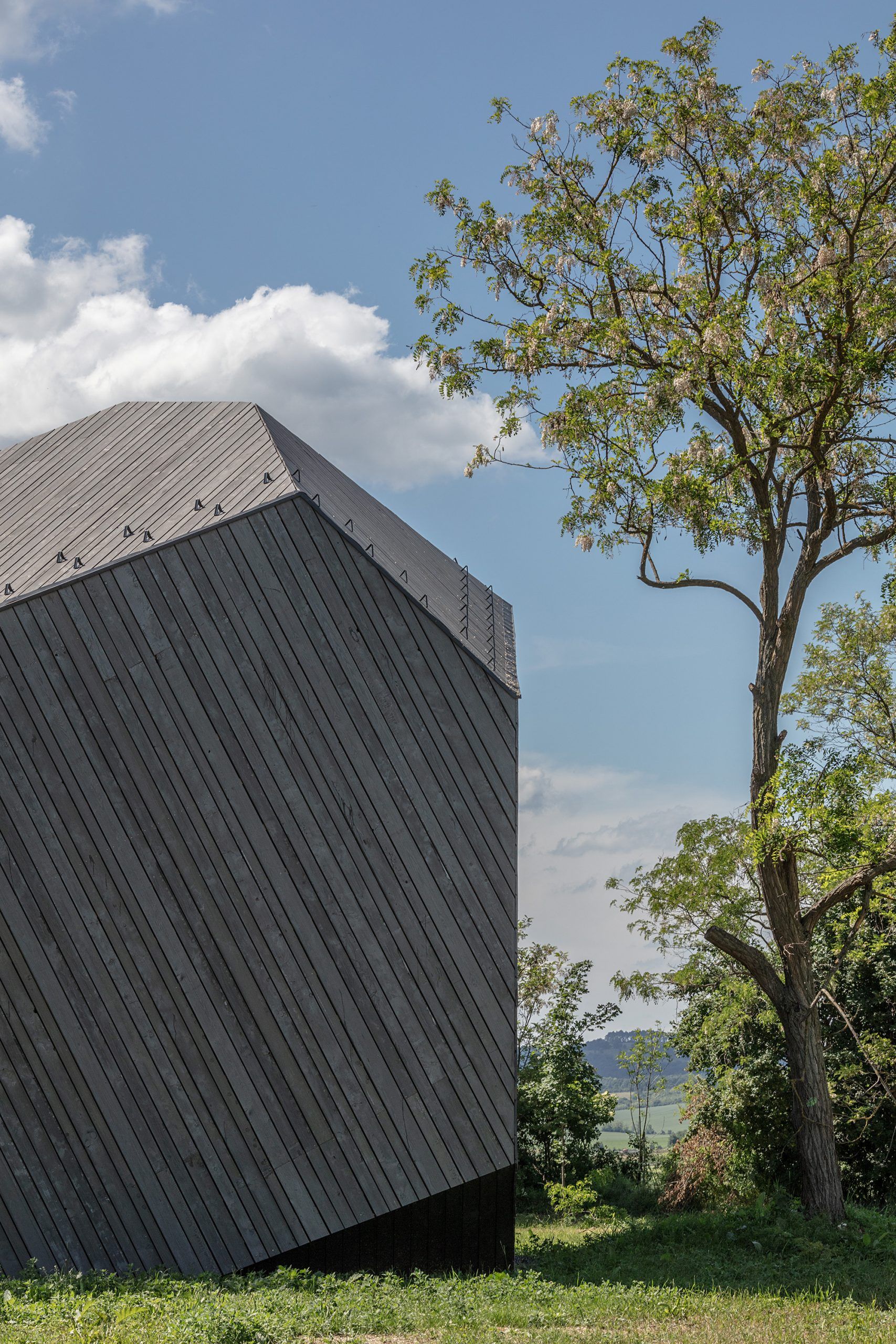
Because the area is most alive in the summer, the Hello Wood team decided they wanted that this place of special atmosphere would become a year-round destination so that more people could experience its picturesque views. From the outset, the architectural firm’s work has been characterized not only by creating buildings of functional and artistic value, but also by supporting local causes, so their latest Sziklák project is also a way of helping the local community. As well as providing jobs for local people, the development will boost the surrounding hospitality sector while ingredients for the breakfasts and dinners prepared for the guests will come from local producers. As Tamás points it out, they hope the new cabins will help boost the area.
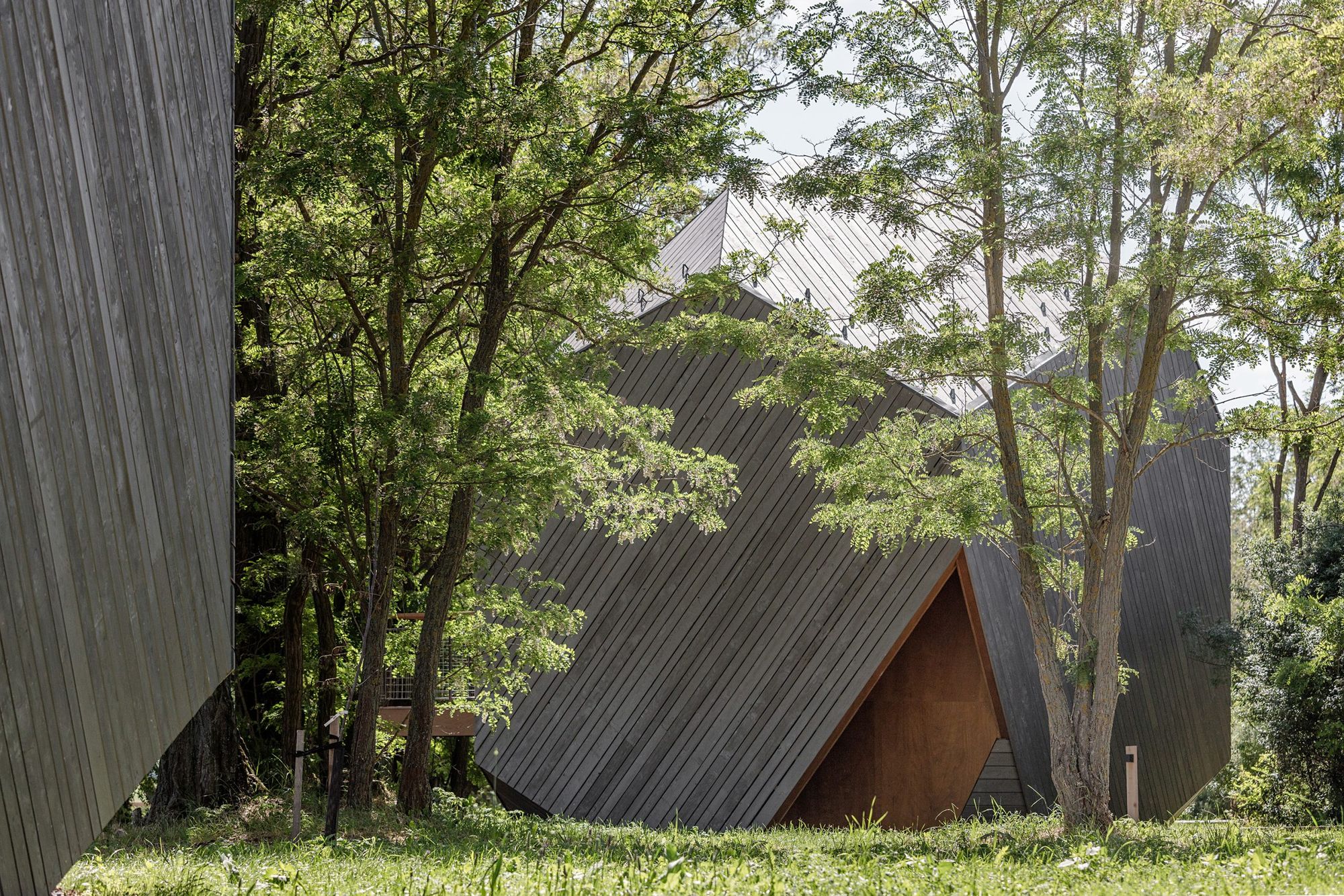
Shapes echoing an ancient atmosphere
One of the characteristics of these holiday or residential cabins is that they are very compact: “While booking accommodation in a hotel is purely functional, spending time in a cabin is an experience in itself,” says Tamás. This kind of complexity is not only a result of the closeness to nature and the experience offered by the different services but also a feature of the cabin’s design. “The idea behind the cabin house or tiny house approach is to create a quality architectural environment in a minimal space. To live or stay comfortably in a small space, every square centimeter need to have its exact place, and to be planned out: there are no unnecessary spaces, no superfluous lines. This kind of optimization results in a truly usable, well-functioning house,” he adds.

As the name of the cabins foreshadows, the basic formal concept of the Sziklák was inspired by its natural surroundings. “The shapes, reminiscent of monoliths and runestones, reflect the ancient atmosphere of the place,” he explains. “To achieve a homogeneous, compact overall image, the appearance of the wall and the roof could not differ: there could be no rain gutters, openings, or material changes,” continues Tamás. Thus, the building mass is opened up only at the incision of the terrace and entrance, and the homogeneous, sculptural form is not interrupted by any other openings or staircases. The runestone- or boulder-like character of the design cabins is further accentuated by the use of irregular planes and dark grey wooden panels, which together create a form similar to polished rock. Like a geode inside its cracked grey shell, the terrace and the interior are revealed a golden brown cladding.
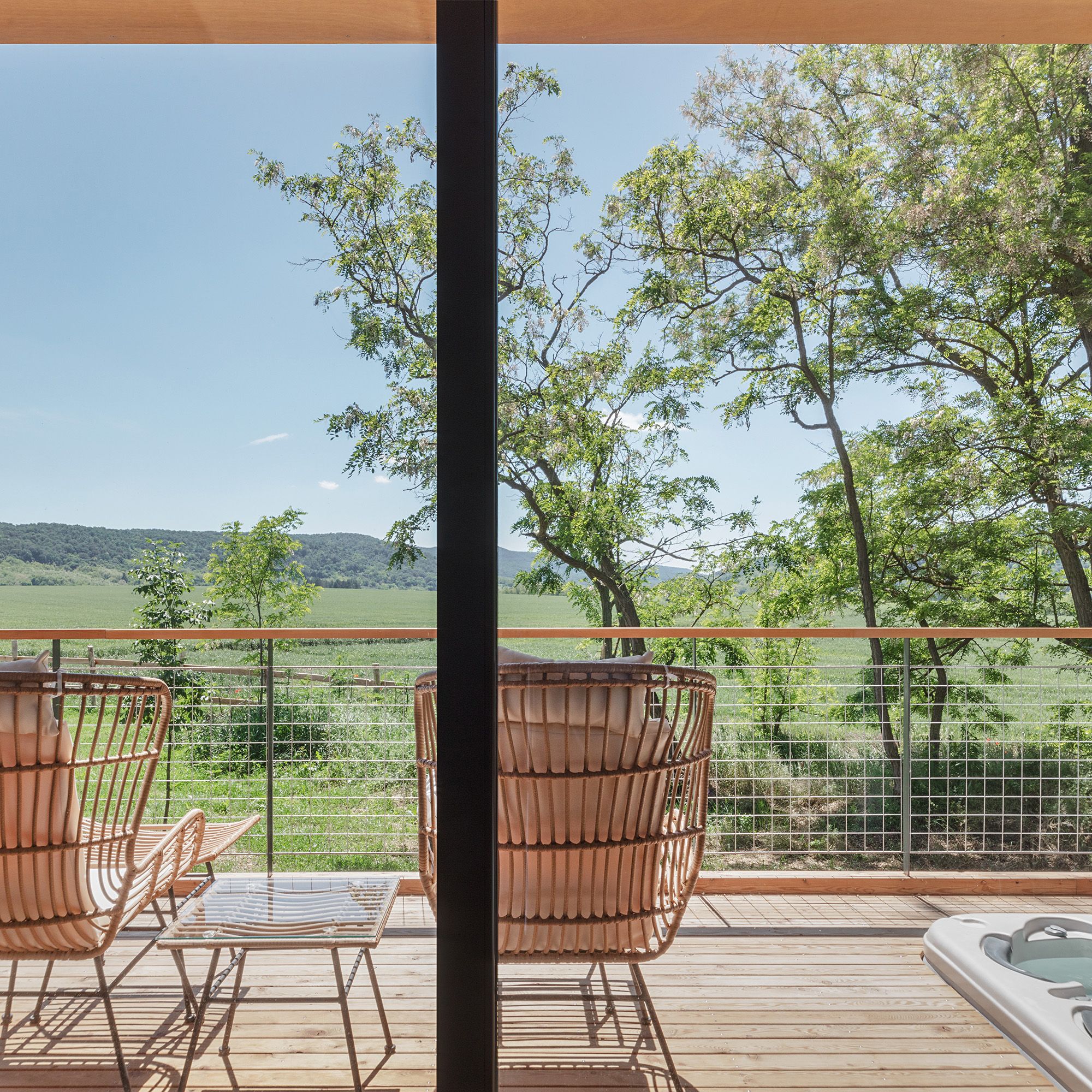
In addition to emphasizing the qualities of the surroundings, as Tamás points out, intimacy was a key element of the architectural program. To ensure an undisturbed experience, all six design cabins are positioned facing away from each other around the boardwalk that connects them, providing views of the surrounding fields and rolling hills, and ensuring that guests relaxing in the cabins can hardly sense the presence of their neighbors.
Space as a single piece of furniture
Through a concealed staircase leading from the cabins’ serene entrance, guests arrive at the terrace, which measures 15 square meters. “It’s practically the size of a living room: for a cabin, outdoor space is very important, so because of the compact interior, a generous terrace is a good incentive to spend as much time as possible in nature,” adds Tamás. The intimacy is further enhanced by the fact that the floor level of the cabins has been deliberately elevated from the terrain and their terraces: “you get a better panorama and you also feel more protected,” Tamás explains. The semi-covered terrace also features a sunken hot tub. A large glass wall separates this space from the central interior space of 21 square meters, which includes a private kitchen, dining table, double bed, and built-in wardrobe. “The main space of the cabin is covered in a single material, birch plywood: it’s as if the whole interior was a single piece of furniture. If you move a wooden panel, the wardrobe is revealed behind it, if you move another one, you find the bathroom,” details Tamás. In the latter, there is a private wellness zone with a comfortable shower for two and an infrared sauna, with a full view of the panorama and the mysterious lights of the terrace jacuzzi.

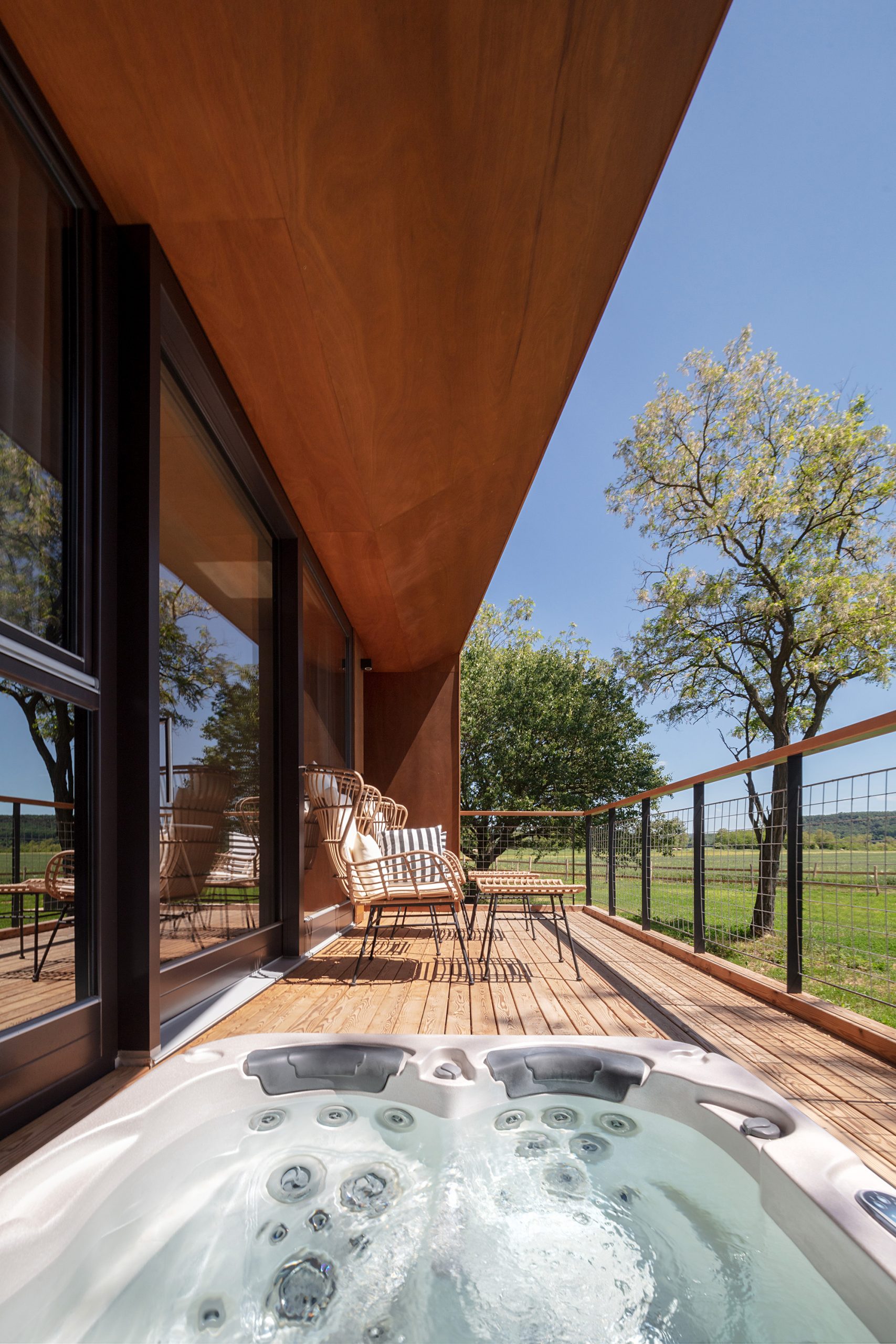
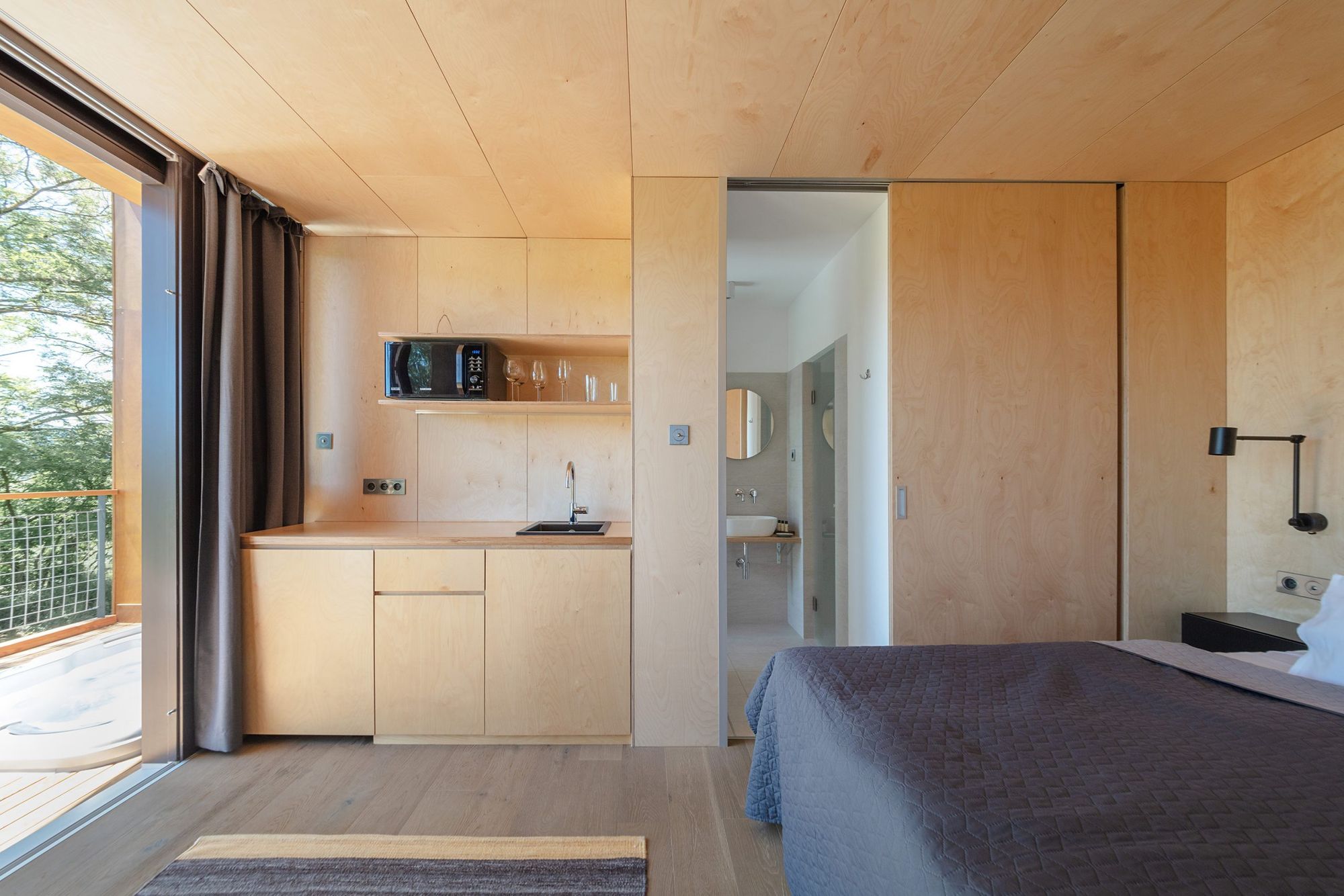

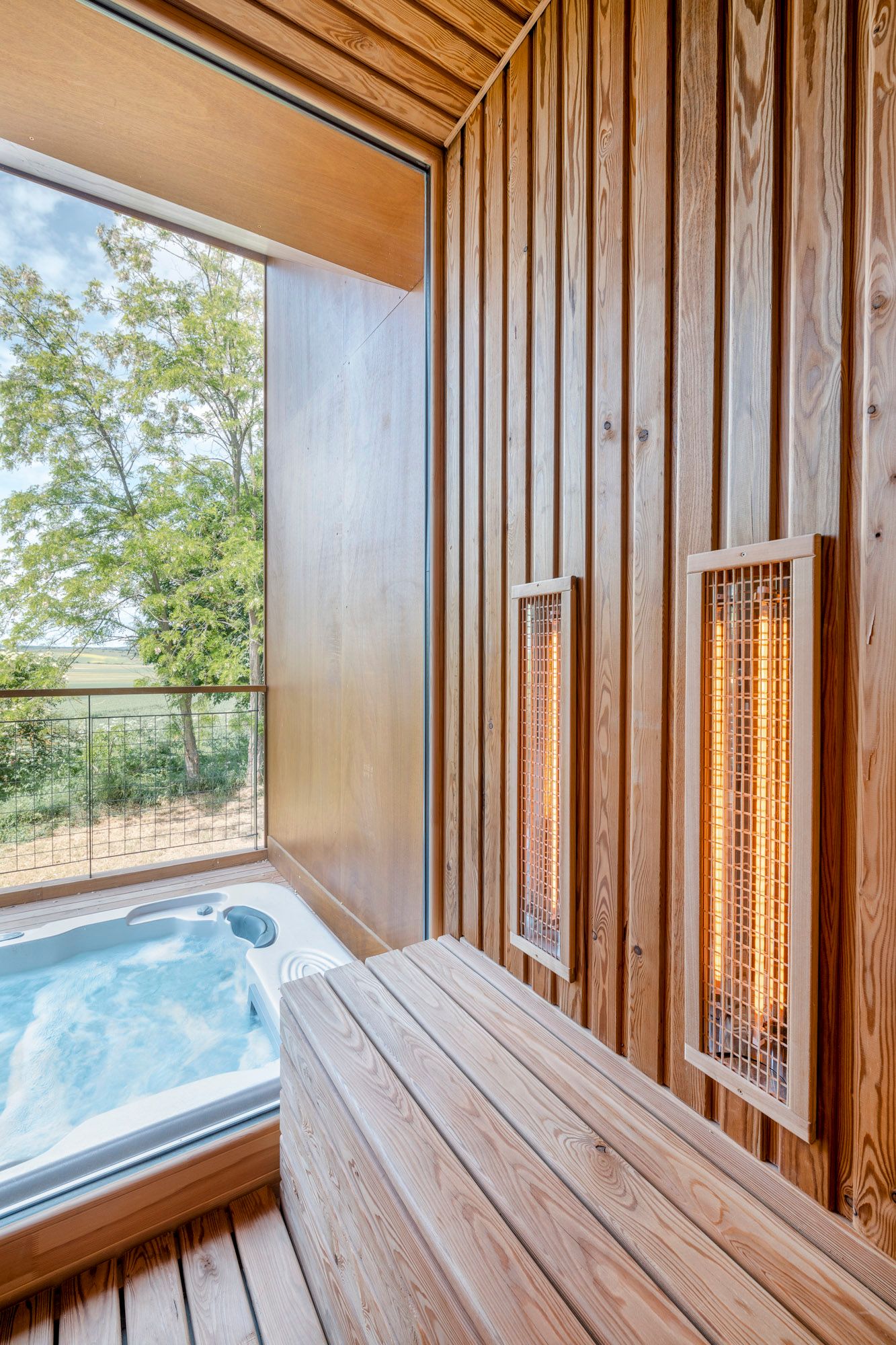
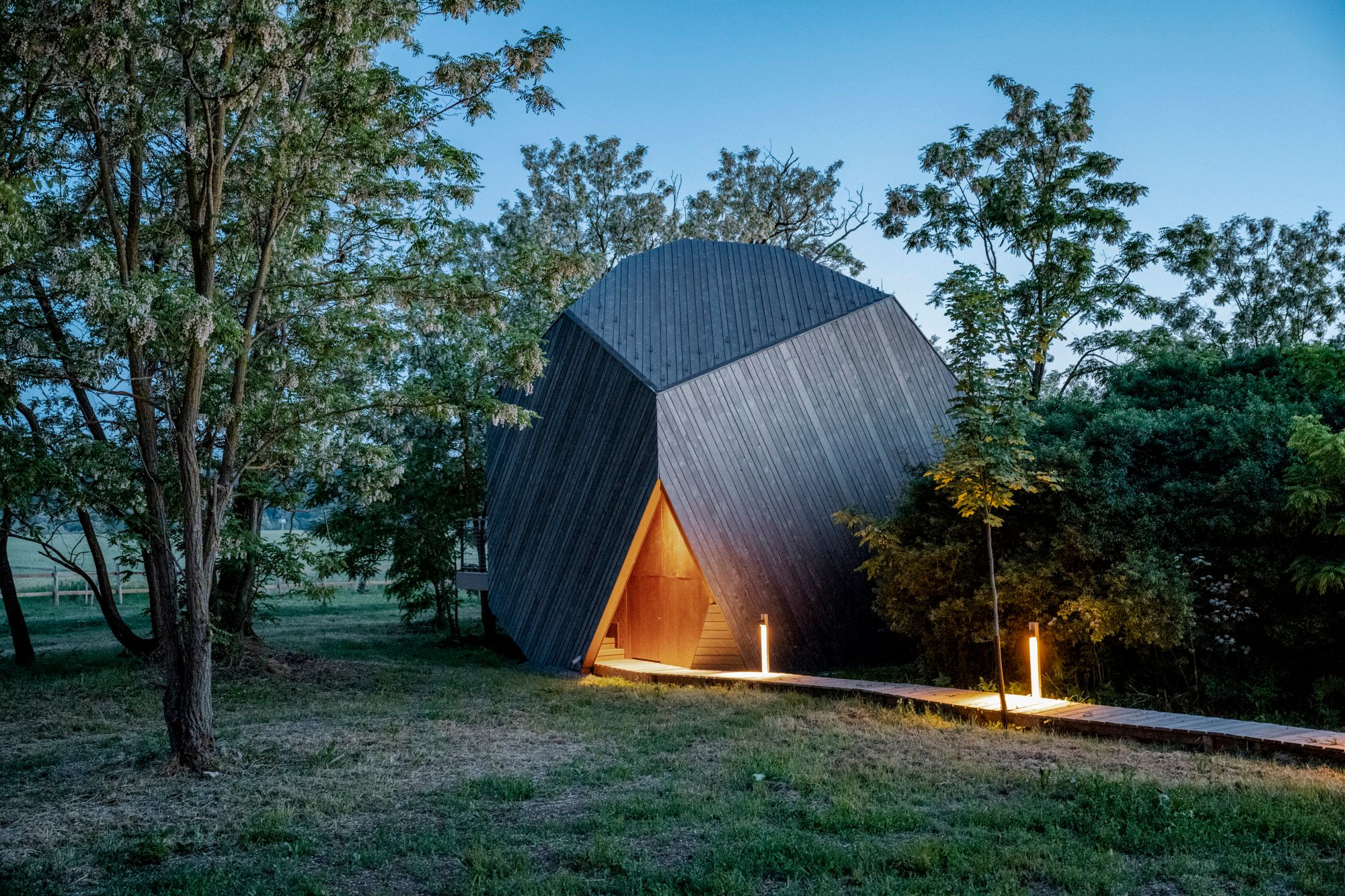
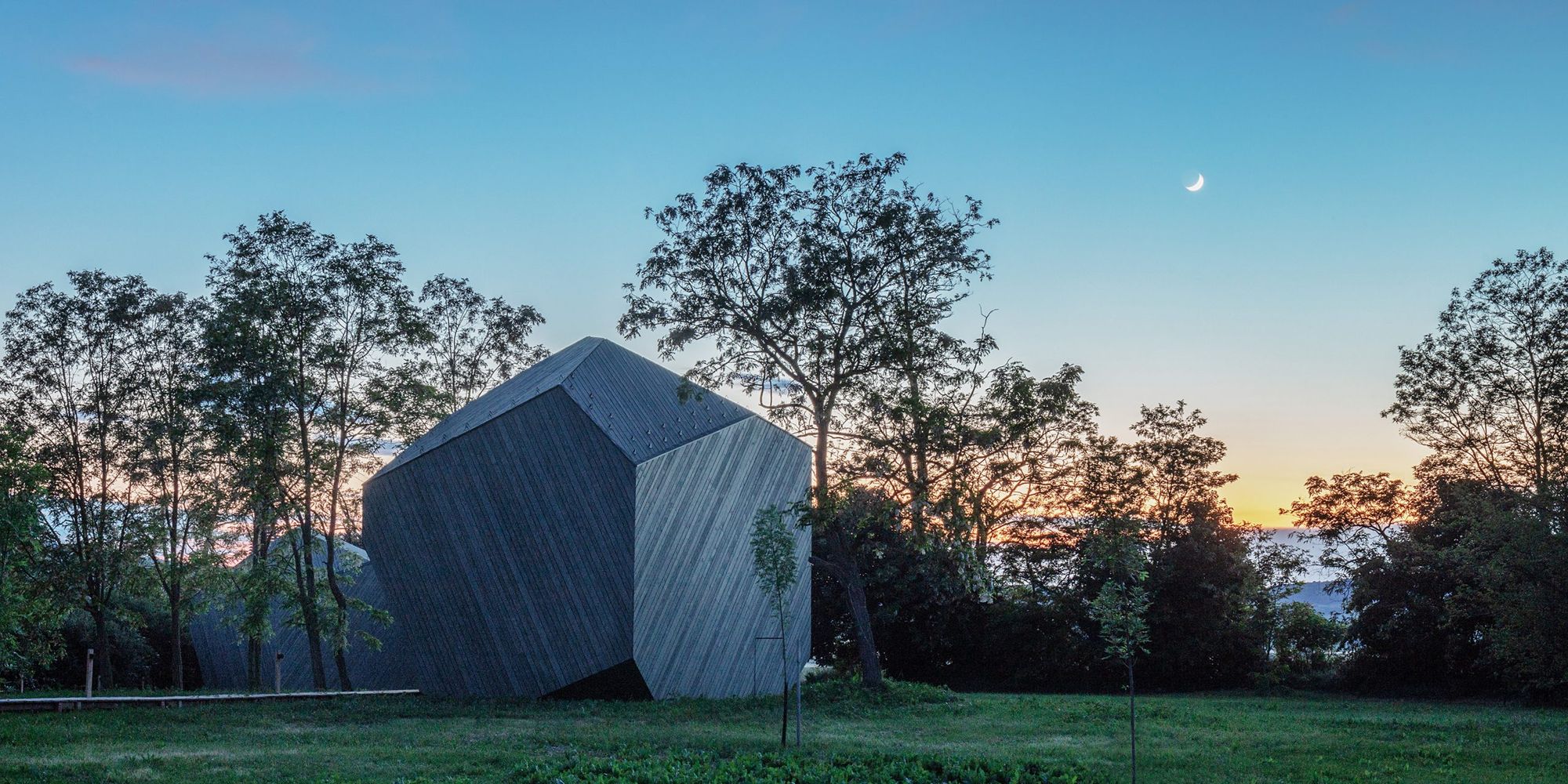
In a final thought, Tamás also reveals that he not only supervised the creation of the Szikla cabins as an architect but also had the pleasure of trying them out:
“It should be fundamental in architecture that if you design something, you test it. That’s the best way to experience the space you’ve designed and to get a sense of the importance of each solution”.
The Sziklák offer comfort and intimacy for two. If you would like to try it out yourself, you can book your stay here.
Head designer: Péter Pozsár, Huszár András
Project leading architect: Tamás Fülöp
Architectural consultant: Tamás Dévényi, Csaba Valkai
Architectural assistants: Péter Oravecz, Gergely Kiss
Creative board: András Huszár, Dávid Ráday, Krisztián Tóth
Photos: Tamás Bujnovszky, Máté Lakos
Cover photo: Máté Lakos
Hello Wood | Web | Facebook | Instagram
Treehouses Kapolcs | Web | Facebook | Instagram
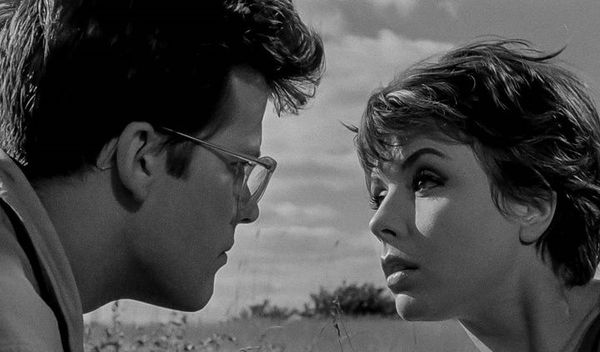
Thousands of Polish films available for free
